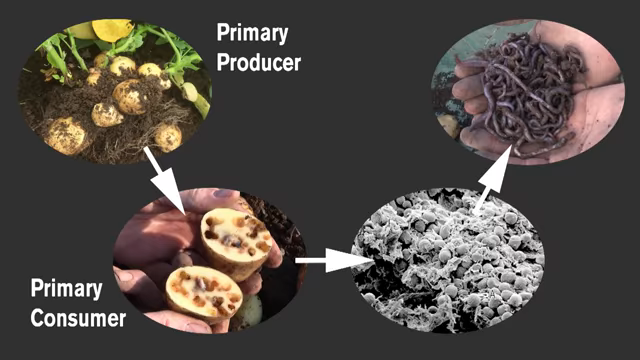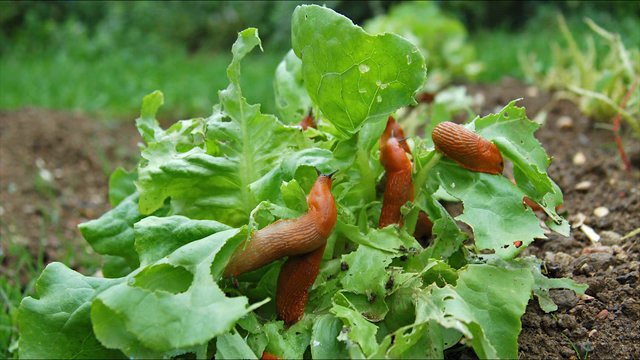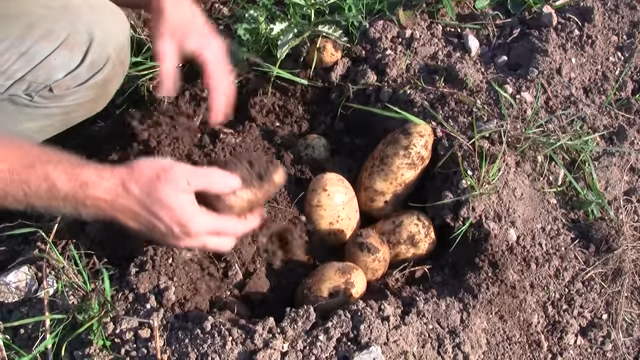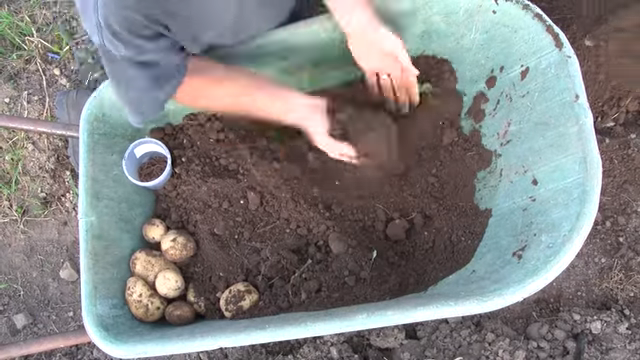I often find that I learn a lot, or gain significant insights, when things don't work as I expected them to especially when something fails.
While taking out this crop of potatoes in the block plot I became quite disillusioned.
I wasn't expecting a great yield for a variety of different reasons but as I dug them out, I realized that things were worse than I
expected them to be.
Although I was taking up a lot of big potatoes, many of them were riddled with slow calls I've had a lot of slug damage with my potato crops in the past, it remains one of the persistent pest issues that I'm trying to deal with.
As I continued to dig out the long rows of buried tubers, I began to notice that there are a lot of are worms more than usual.
The presence of earthworms is a good sign, as they are highly beneficial to soil development.
The general idea is that the more there are, the better and healthier the soil is, or will become.
I would expect there to be a fair number of earthworms in the soil, as it had been turned over in the spring burying a lot of organic matter which would have provided a lot of worm food.
But there seemed to be more worms in this section of the soil than in other parts of the plot that had received the same treatment.
Then I noticed an interesting correlation.
In parts of the bed where more the potatoes were eaten by slugs, there were more earthworms.
And in areas where there was less damaged there were fewer worms.
It was only then that I realized what was probably happening here.
The potato plants were storing huge amounts of carbon in the form of starchy carbohydrates in the underground potatoes.
Slugs were consuming some of these potatoes, and the worms are feeding off of the wastes of the slugs either directly or by consuming the bacteria and fungi that fed off of the slug wastes.
This is a simple but effective food chain, funneling huge amounts of food to the soil biology, with the potato plants acting as primary producers, and the slugs acting as primary consumers.
Of course I'd much rather harvest a full crop of slug free potatoes, but the loss of a crop is not a total loss - it never really is in a garden.
The potatoes that won't be feeding me will be feeding the soil, and this increased soil biology and fertility will only benefit the next crops that I'd plant in this part of the plot.
potato plants are extraordinary for the amount of carbon that they can pull out of the air and sequester its carbohydrates and the tubers.
This is why we grow them.
But what is food for us, can also be food for the soil biology - and in this case there is lots of it.
I started to wonder if potato plants can be used as a green manure.
Green manures are plants that are specifically growing in to build soil fertility, to fix nitrogen, to improve soil texture, and to increase soil organic matter.
An important role of green manures is to feed the soil biology by putting carbon into the ground, and that is exactly what is happening with this part of the potato crop.
So, I began to think about the idea of planting a crop of potatoes with the purpose of leaving them in the ground to feed the soil.
If enough slugs were around as primary consumers, it seems that a lot of food could be supplied to the soil ecosystem, including the worms.
This would really benefit the soil structure and the crops that grew and not soil in the following season.
But, the slugs that ate the potatoes would only go on to make more slugs, which is not a good thing in a vegetable garden.
Unless you had something that ate the slugs, like ducks.
Now that could be an interesting integrated approach that would be worth exploring at some point in the future.
Another issue is that potatoes that were not even by slugs could sprout again in the following spring, which would be problematic.
Beyond becoming a persistent weed within the next crop, the second-generation potato plants could become a source of potato blight in it to infect next year's crops which is definitely something I want to avoid.
Overall it's probably not a great strategy for my gardens, unless I could find a way of killing off the slugs, having them eaten by something, and to make sure that all the remaining potatoes were removed.
But I am still intrigued by the possibilities of using potatoes, and even other crops, to actively feed the soil instead of providing a harvestable yield.
From this simple observation of the number of worms corresponding to the amount of slug damage, I realized the positive impact that this could have on the soil.
In hindsight it all seems rather obvious.
I have read about these types of soil processes and books, and I understand the basics of what is involved.
But as with many things it took direct experience to make that knowledge my own, rather than simply relying on the experiences and teachings of others.
So, I decided to find out how many earthworms were actually among these slug eating potatoes.
I dug out about a quarter of a square meter of soil about two and a half square feet from around one potato plant that had had moderate slug damage.
I counted 85 worms in total, and it would have been significantly more worms around the plants that have had more slug damage.
As most of them appeared to be immature common worms, it would seem that the population has substantially increased quite recently which makes sense with all of the extra food.
This number of worms translates to more than 300 worms per square meter - more than 30 per square foot - which is apparently at the high end, or the upper end of what I should expect to find in healthy organic soils.
So, inadvertently the soil in this part of the block plot is off to a great start!







